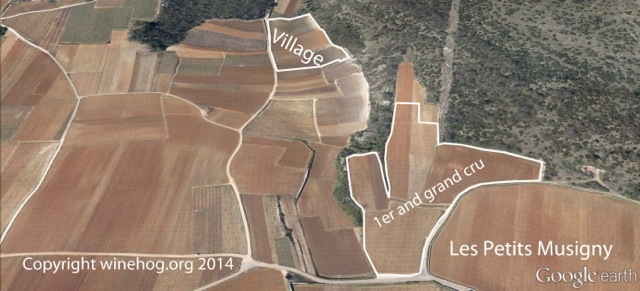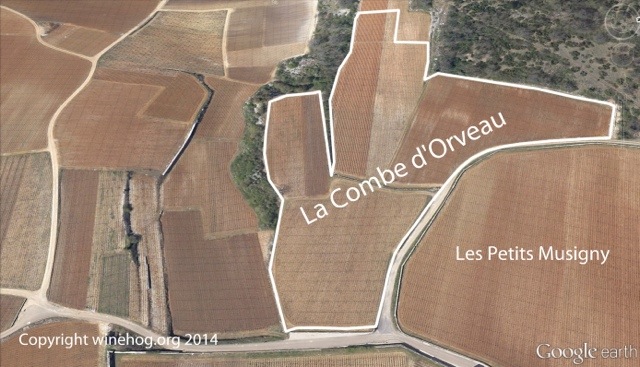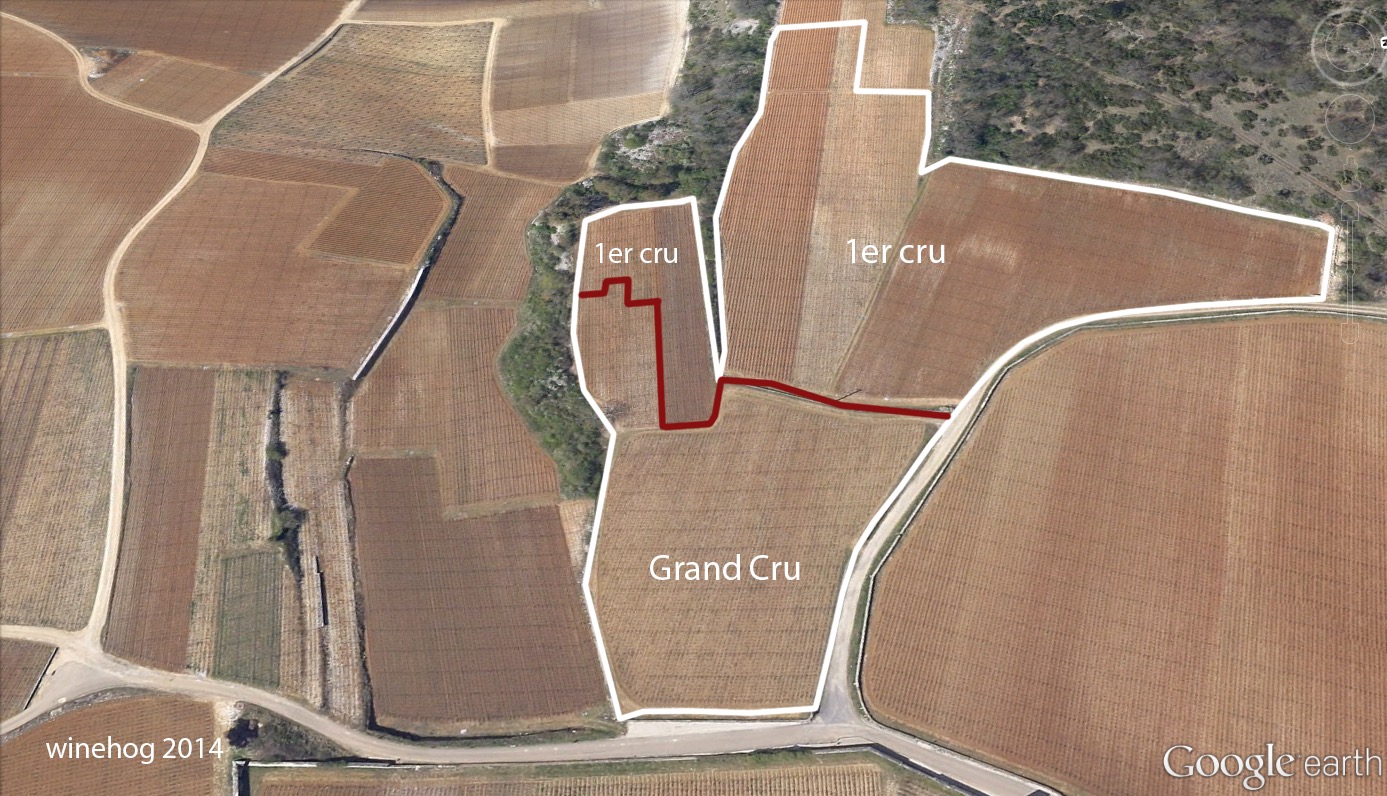Gevrey Chambertin Clos St-Jacques Vielle Vigne 2009, Fourrier
En rå vin, jeg syntes den hadde litt kork og hadde mye urenheter, men alle var ikke enige. Det er liksom stilen til produsenten ! Vi diskuterte mye denne vinen; var den slik den skulle være ? Det er en dyp og genuin underliggende frukt her. En fragrant og forførende intensitet med deilig rødbærsfrukt. Men vinen er "vill" og lever farlig. 93 poeng.
Gevrey Chambertin Clos St-Jacques Vielle Vigne 2011, Fourrier
Igjen en intens rødbærsfrukt, den har en fellesnevner med noe spontant gjærkulturelt med 2009, men denne har "cocinella" frukt med markerte og aromatisk grønne blader og er klart stilkete. Lever godt opp til årgangens grønne "markør". Men samtidig mye frukt her, en "cornecupia" av mange fasetter. Vanskelig vin å vurdere, men det grønne trekker ned. 91 poeng.
Arild Håland mars 2015: Fourrier Clos st. Jacques 2011 var derimot helt strålende, og var for meg kveldens beste vin. Jeg er veldig glad i Fourrier for hans svært rene frukt og lekre viner, og på dette nivået kombineres disse egenskapene med vinmarkens kvalitet, struktur og fruktkonsentrasjon. Da blir resultatet nært magisk. Nydelig rødfruktsparfyme, intens, ren og dyp, og den beste burgunderen jeg har smakt så langt i år. Det er et lite streif av 2011-grønske, men det skjemmer ikke. Stor vin.
Musigny Grand Cuvèe Vielles Vignes 2007, Comte G. de Vogue
Anonym start på nesa, deretter popkorn, karameller og smørmalt. Ren Pinot Noir, ungdommelig og en høy "Grand Cru" aktig konsentrasjon. Men til en høy pris nå. 93 poeng
Chambolle Musigny La Combe d`Orveaux 2007, Bruno Clavellier
Frisk vin, svir litt i munnen. Litt typisk "chambolsk" lettvekter fra en lett årgang. 88 poeng.
Fra winehog;
La Combe d’Orveau – village, 1er cru and a part of Musigny
The Chambolle-Musigny La Combe d’Orveau is one of the hidden gems of Cote de Nuits. Only a few producers make wine from this slightly overlooked terroir and a part of of the climate is now a part of a “rather” well known grand cru. The grand cru is of course Musigny and the story about the expansion of Musigny is also the story about La Combe d’Orveau a terroir with at least partly grand cru potential.Chambolle Musigny La Combe d’Orveau is devided in two sections – the 1er cru and grand cru climates located just above Clos de Vougeot on the slope just south of Les Petits Musigny and the village section located further west on the border between Flagey-Echezeaux and Chambolle-Musigny – see map below.
Update – with new info on the Jacques Prieure holdings In this article I will focus on the 1er and grand cru section of La Combe d’Orveau, allthough very good wines are made by J.-F. Mugnier, Anne Gros and Jean Grivot on the village climate located in the valley between Chambolle and Flagey. Anne Gros owns the largest part of the village section of La Combe d’Orveau – her plot is 1.1 ha – more than 50% of the 2.06 ha village part of La Combe d’Orveau.
The 1er and grand cru section of La Combe d’Orveau is located above and just south of Les Petits Musigny on a south east oriented slope just above the northwest corner of Clos de Vougeot. The area of this section is 3.15 ha, and was even before the expansion of Musigny in 1929 owned by several of the current owners of the terroir.
The expansion of Musigny in 1929
The original Musigny vineyard had two main climates – Les Musigny and Les Petit Musigny. In 1929 a third climate was included in the Musigny appellation when a 0.62 ha part of La Combe d’Orveau owned by Jacques Prieur was promoted to grand cru Musigny 1.
It was the bottom part of La Combe d’Orveau that got promoted – see map below – and the rumor says that some of the other owners were reluctant to apply for a promotion due to higher land taxes on grand cru vineyards.3
The cadastre maps have been changed since this expansion, so the map above is a approximation of the situation after the expansion of Musigny in 1929.
The second expansion of Musigny in 1989
In 1989 we saw the second expansion of Musigny, and it was again initiated by Jacques Prieur who wanted to expand the Musigny part of La Combe d’Orveau. In total 0.15 ha of La Combe d’Orveau 1er cru was promoted to grand cru on this occation – see map below.
The boarders between the grand cru plots and the 1er cru plots are somewhat unclear, as the arial photo suggest one thing … while the cadastre maps show a more irregular border between the Faiveley and Prieur holdings … see map of ownership below.
The current owners on La Combe d’Orveau
There are five owners on the 1er cru and grand cru section of La Combe d’Orveau today. The largest owner is Domaine Bruno Clavelier who own the largest share of the 1er cru section, while Domaine Jacques Prieur is the second largest owner with the 0.7660 ha grand cru section and 0.0476 ha in the 1 er cru section – the 1er cru section is located at the top of the grand cru plot. According to my sources Jacques Prieure make around 150 bottles of La Combe d’Orveau 1er cru in a normal year.
- Domaine Bruno Clavelier – 0.8155 ha
- Domaine Jacques Prieur – 0.8136 ha
- Domaine Perrot-Minot – 0.4736 ha
- Domaine Taupenot-Merme – 0.4547 ha
- Domaine Faiveley – 0.2907 ha
It should be notet that the Perrot-Minot and Taupenot-Merme plots originates from the Merme family as Henri Perrot-Minot was married to the daughter of Armand Merme in 1963 … and they took over some of the family vineyards.
Echezeaux Grand Cru 2007, Jean_Marc Millot
Ren rødbærsfrukt, god stamina, god balanse, kan lagres. 94 poeng








Ingen kommentarer:
Legg inn en kommentar